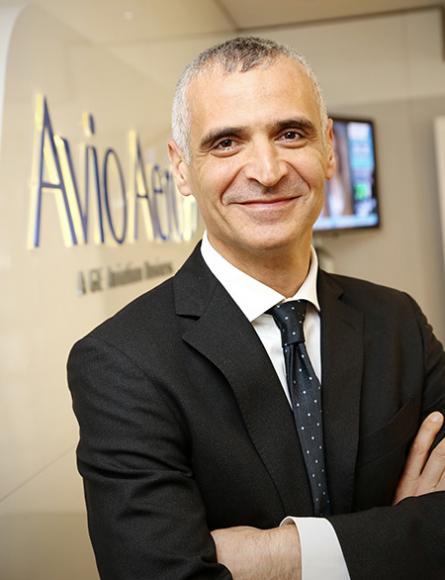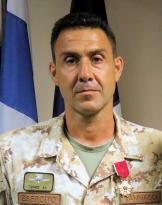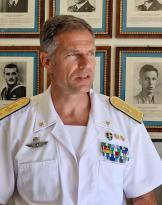In the Italy of which we complain so much, the one that in recent years has seen too many companies close their doors, there are real "pearls" that go against the trend par excellence in terms of technology and human resources. We have been accustomed to think for too many decades that behind every order there were "parallel activities" indifferent to the type of service or product at stake. Recently, however, the US Navy - the Navy's most powerful military on the planet - has commissioned the maintenance of their equipment to a General Electric propulsion Italian company owned. If extremely "hot times" as marine engines entrusts its ships to an "ally", there must be valid reasons, certainly not just politicians. To deepen the picture and dispel some curiosities, we interviewed the CEO of the company in question, Riccardo Procacci, a manager who - in the American way - was immediately available to answer our questions.
Three years ago, the aviation division of the historic company Avio was acquired by the giant General Electric, the multinational company it has been working for almost twenty years, becoming Avio Aero. What was originally and what is GE's interest for Italy today?
Italy for GE is a country of great importance, due to the high engineering skills and competitiveness of our young people.
Today, GE in Italy has 12.400 employees, 25 offices and factories, revenues of over 2 billion and a turnover of 7,5 billion. Mainly operates on the Italian territory through GE Oil & Gas in Florence (formerly Nuovo Pignone) e Avio Aero in Turin. The former is engaged in the production of technology for the extraction, refining and transportation of oil and gas. Avio Aero, on the other hand, is GE's center of excellence in the field of mechanical transmissions and low-pressure turbines.
In Sesto San Giovanni (Milan), following the acquisition of the Energy activities of Alstom announced on November 2, GE is active in power generation and transmission operations.
Last month a contract was signed for the maintenance of naval turbines of the US Navy at your site in Brindisi ...
Yup, GE Marinewhich is a business of GE Aviation, has signed a contract for the provision of overhaul services for LM2500 turbines that power US Navy ships, as well as those of the Canadian Navy, and the activities will be carried out at the Avio Aero plant in Brindisi. Another step that will widen and further strengthen our international logistics chain, the result of synergies between the industrial plants of the General Electric network, which is a great resource for the independence and autonomy of our customers' marinas, especially in times difficult as these.
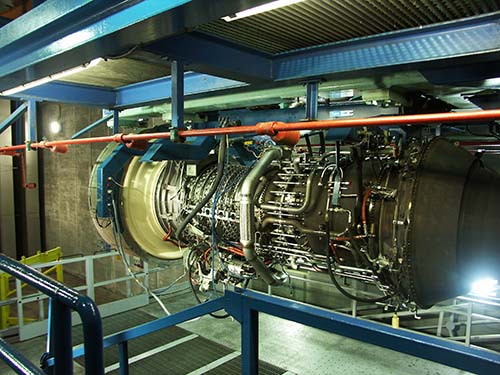 Our Brindisi site, already at the service of the Italian Navy, has today become a center of excellence for the revision and maintenance of LM turbines, the world's best seller, where the components are dismantled, repaired, re-assembled and retested. Outside the United States, Brindisi is currently the largest review center for LM class turbines, used both for marine propulsion and for industrial applications.
Our Brindisi site, already at the service of the Italian Navy, has today become a center of excellence for the revision and maintenance of LM turbines, the world's best seller, where the components are dismantled, repaired, re-assembled and retested. Outside the United States, Brindisi is currently the largest review center for LM class turbines, used both for marine propulsion and for industrial applications.
Was part of GE indifferent to getting the job?
No, being part of GE's international network definitely opens up new opportunities. In fact, if before GE was the main customer of Avio Aero, now it is a partner and this for us means to have the possibility to increase our presence within its programs such as, for example, the new GE9X engine that will be mounted on Boeing 777X, the 400 passenger aircraft whose entry into service is scheduled for the 2020. Avio Aero plays an important role in the engineering development of this engine and its component production. The main responsibility, in fact, is to design and produce the transmission box, in addition to the entire low pressure turbine module, which also provides for its assembly.
In Cameri, on the other hand, what do you do?
At Cameri we realize objects of any shape starting from a digital model. The process, called '' additive manufacturing '', aggregates powders of special metal alloys. Through this technology it is possible to produce more advanced components that can be used on the next generation engines, just like the GE9X just mentioned.
How is Avio Aero structured in Italy?
Avio Aero in Italy has over 4.000 employees employed in the Rivalta di Torino headquarters, where there is also the largest production plant, and in the important Brindisi factories, historically dedicated to assembly and maintenance of aeronautical engines, above all to support of the Italian Air Force, and Pomigliano d'Arco (Naples), which plays a fundamental role in the production of components that contribute to making Avio Aero a strategic partner of the Defense industry.
Abroad, however, we have a production plant and a test center in Poland.
Given his long professional experience, do you feel like explaining what the American business and commercial mentality differs from the Italian one?
The American approach to business, similar all over the Anglo-Saxon world, is characterized by a strong pragmatism, therefore by a focus on questions of method that leads to act profitably and effectively, leaving aside the merely verbal subtleties. The often quoted saying “Business is Business” is a fairly representative slogan. In this we can probably see the greatest difference with the Latin mentality that distinguishes us in which concreteness is sometimes combined with a “taste” for dialectics and for discussion regardless of the contribution to the concrete result.
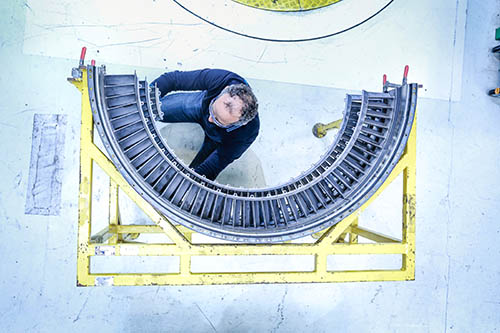
This American approach to business is supported by a greater methodological structuring in terms of procedures, information flows and approval that for an Italian mentality may result, at an early stage, a minimum redundant also because sometimes perceived or feared as a limitation of personal creativity and group, which I think distinguishes us as Italians.
In reality, however, the remarkable common cultural roots that unite Italians and Americans (if only for the significant contribution of Italian immigrants to the melting pot American) facilitate the research and the identification of a point of balance between these two natures.
Another big difference that is perceived concerns the greater research, on the part of the American manager, of a balance between professional and private life; often we Italians have a complete involvement in work while many of the American people encountered in my life seem to be able to "detach" more; maybe in the essential moment of a negotiation 24 hours are concentrated on 24 in concluding it positively but then they manage to carve out, better than us, moments of relaxation with the family or for themselves.
From aircraft to ships, up to the tanks, the presence of turbines seems to have few alternatives. Can you describe the strengths and limitations of the system and to which technologies is research going on?
The use of gas turbines in aeronautical, naval and terrestrial propulsion is mainly dictated by some factors that alternative propulsion systems, such as petrol and electric engines, are not yet able to provide. The fundamental parameter that today makes the use of irreplaceable turbogas above certain powers required, is the possibility of generating such high powers with considerably reduced weights and dimensions compared to other systems. In addition to this, high torque values at the shaft, levels of emissions and vibrations ever more contained over the entire operating range, combined with the ability to increase the power delivered with installments equal to about 1MW per second, make the turbogas extremely flexible. In conclusion, where the required powers are high and there are constraints of size or weight, the turbogas is still the best solution today.
Research in this field is aimed primarily at developing technologies and solutions that help to reduce the specific fuel consumption, environmental impact and noise levels. Current challenges regarding aircraft propulsion involve new materials - such as so-called alloys trans metallic and ceramic materials - new production processes such as additive manufacturing and innovative engine architectures. Furthermore, there is a strong interest in hybrid solutions that combine the use of traditional systems with electrical machines.
How much of your business is related to the Defense?
In the military field, Avio Aero has always proudly served the Italian Armed Forces: taking care of the assembly and maintenance of about 70% of the Italian military propulsion systems, including the engines of Eurofighter, Tornado, Am-X, helicopters of NH90 helicopters and AW101 and all gas turbines of Navy ships.
In times of spending reviews is it worth investing in Italy?
We firmly believe it. In the field of high technology, Italy offers excellent and highly competitive minds. In the last year GE has invested, only in Avio Aero, about 200 millions of dollars, part of an investment plan of about 1 billion in 5 years, destined for research and development and business growth. This is the goal of GE in Italy: to grow and grow the country.


